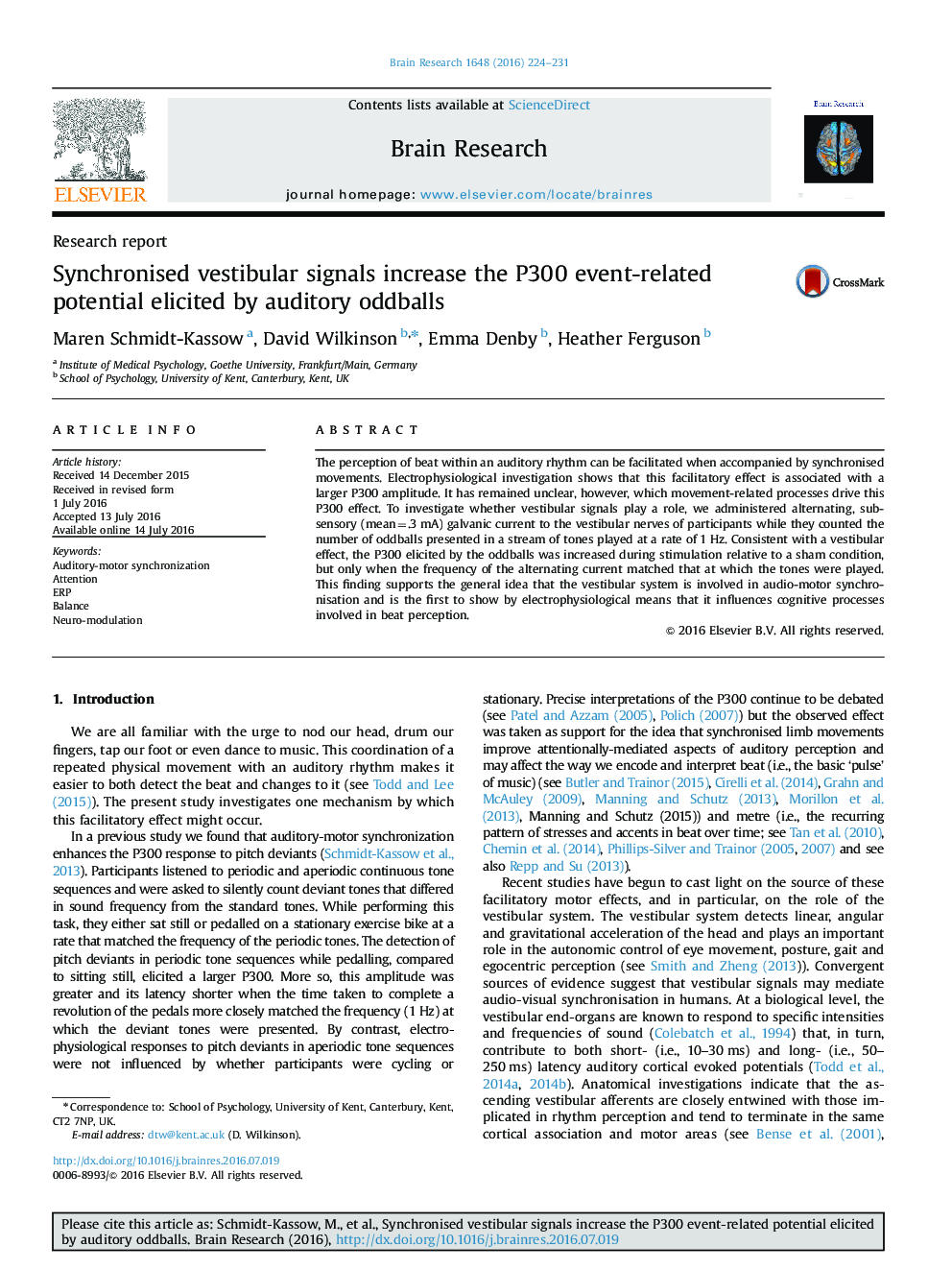| Article ID | Journal | Published Year | Pages | File Type |
|---|---|---|---|---|
| 6262335 | Brain Research | 2016 | 8 Pages |
â¢We tested if vestibular signals change the P300 response to auditory pitch deviants.â¢A change was only seen when vestibular and auditory signals were synchronised.â¢The result helps clarify how vestibular signals influence auditory perception.
The perception of beat within an auditory rhythm can be facilitated when accompanied by synchronised movements. Electrophysiological investigation shows that this facilitatory effect is associated with a larger P300 amplitude. It has remained unclear, however, which movement-related processes drive this P300 effect. To investigate whether vestibular signals play a role, we administered alternating, sub-sensory (mean=.3Â mA) galvanic current to the vestibular nerves of participants while they counted the number of oddballs presented in a stream of tones played at a rate of 1Â Hz. Consistent with a vestibular effect, the P300 elicited by the oddballs was increased during stimulation relative to a sham condition, but only when the frequency of the alternating current matched that at which the tones were played. This finding supports the general idea that the vestibular system is involved in audio-motor synchronisation and is the first to show by electrophysiological means that it influences cognitive processes involved in beat perception.
